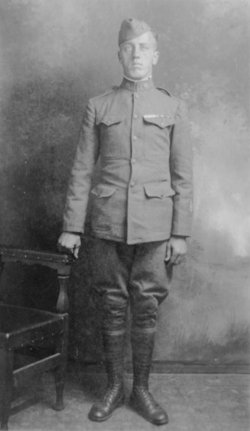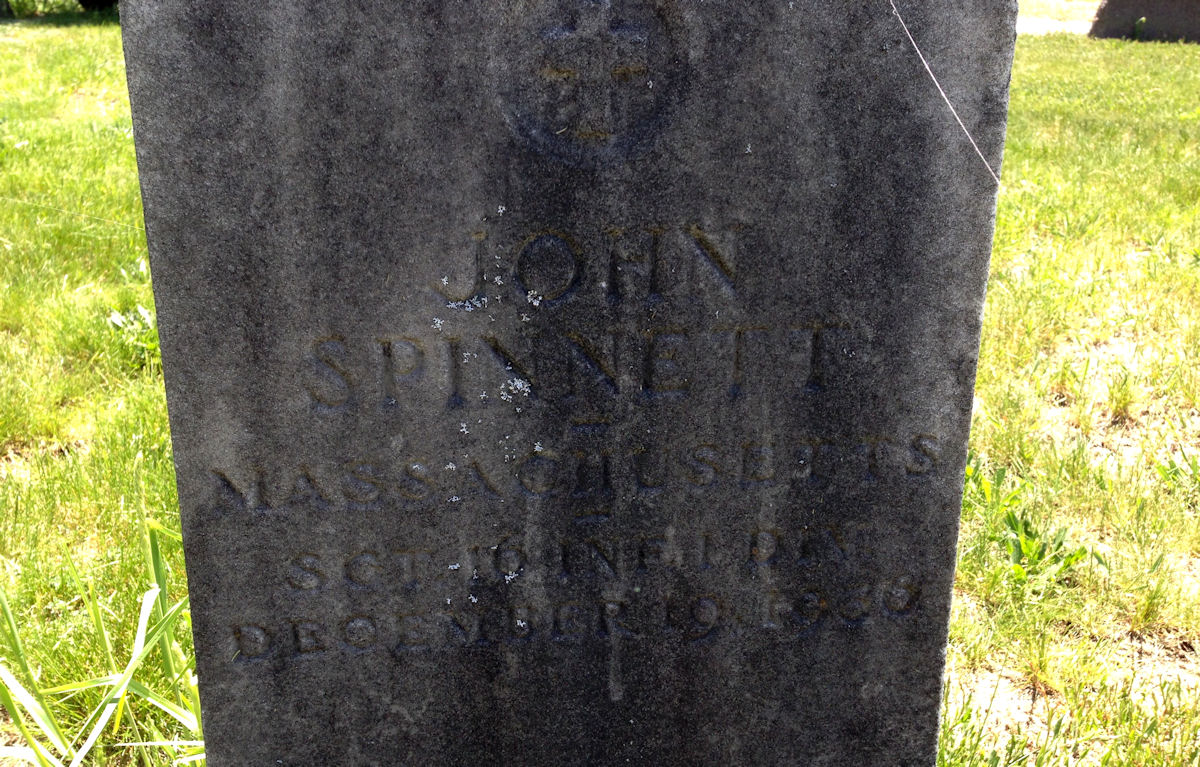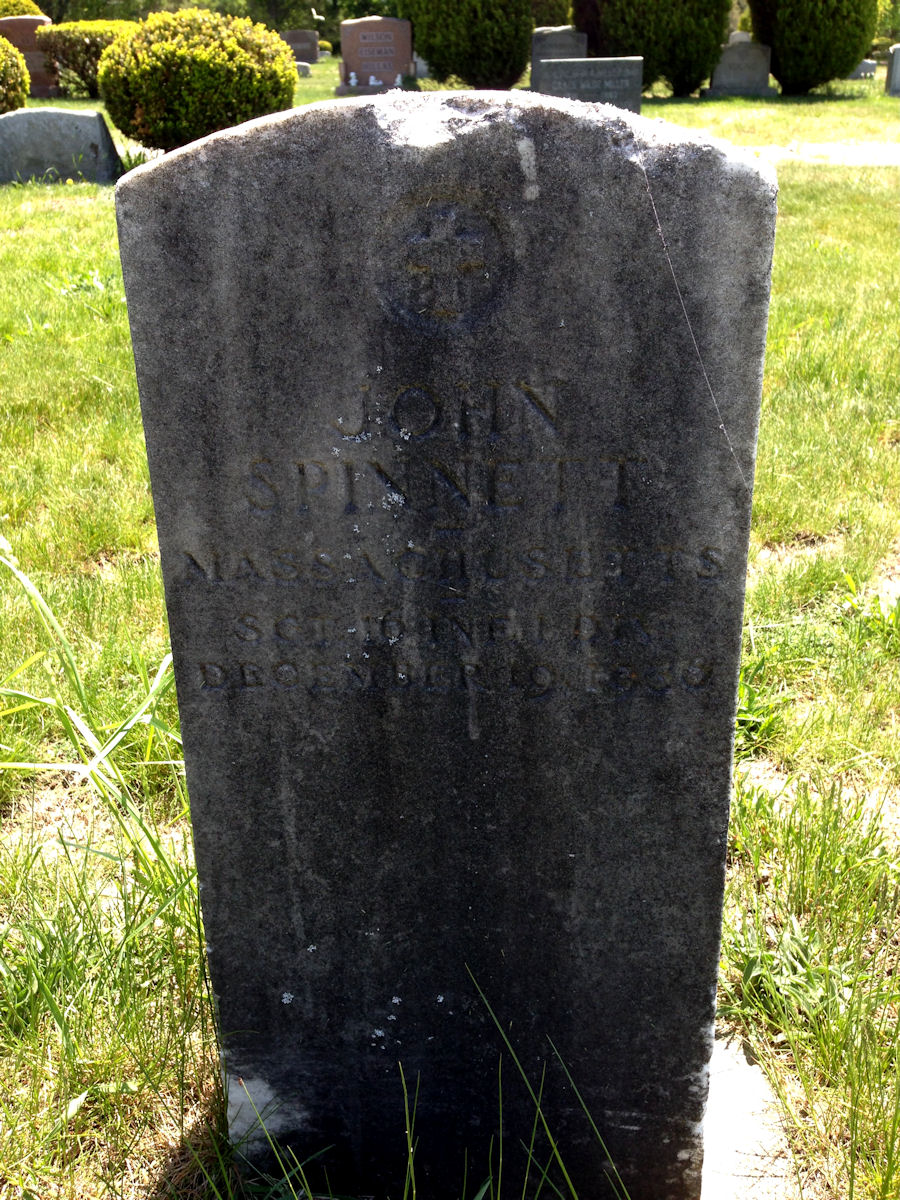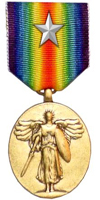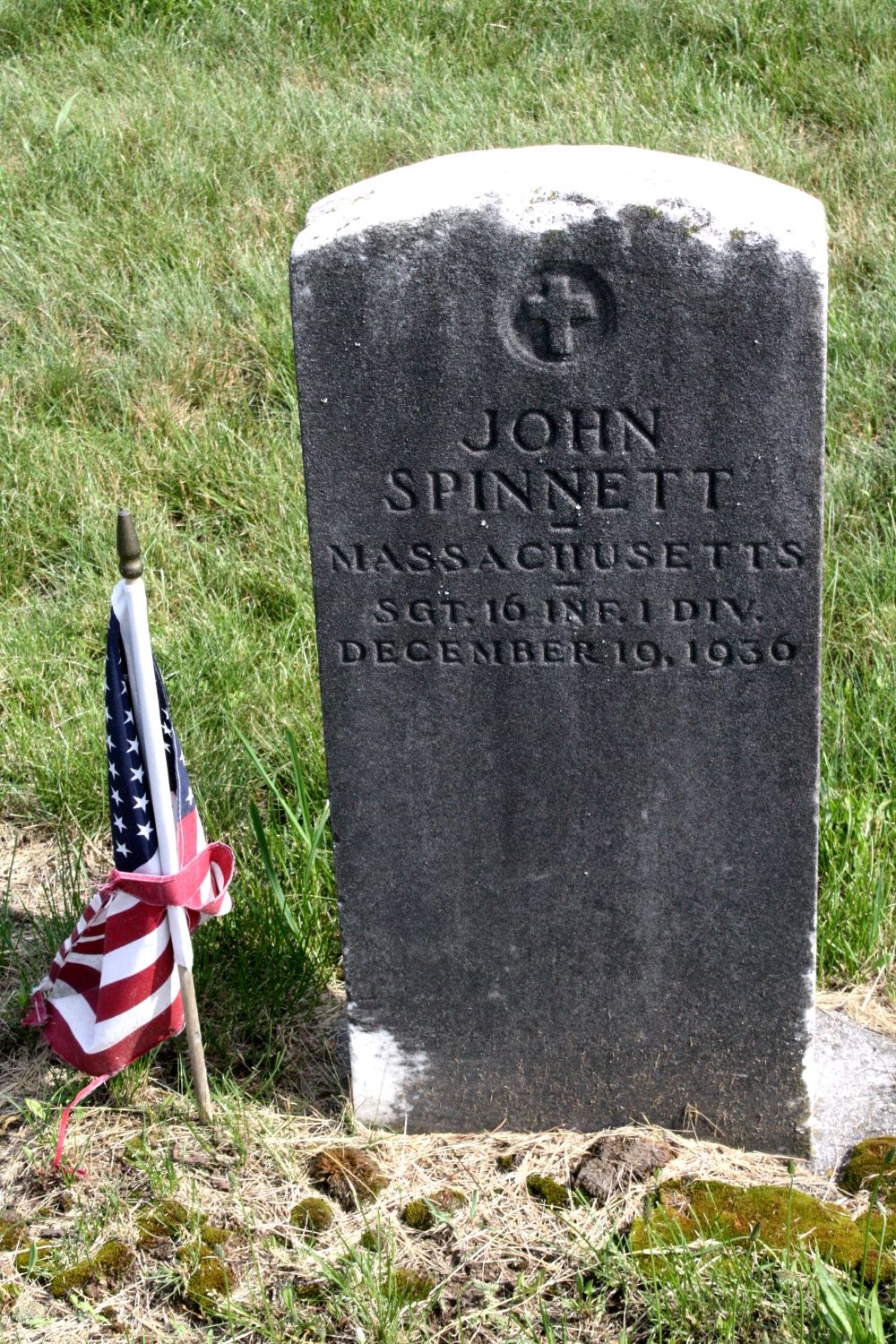The First Expeditionary Division was constituted in May 1917 from Army units then in service on the Mexican border and at various Army posts throughout the United States. On June 8, 1917 it was officially organized in New York, New York. This date is the 1st Infantry Division's official birthday. The first units sailed from New York and Hoboken, N.J., June 14, 1917. Throughout the remainder of the year, the rest of the Division followed, landing at St. Nazaire, France, and Liverpool, England. After a brief stay in rest camps, the troops in England proceeded to France, landing at Le Havre. The last unit arrived in St. Nazaire on Dec. 22. Upon arrival in France, the Division, less its artillery, was assembled in the First (Gondrecourt) training area, and the artillery was at Le Valdahon.
On the 4th of July, the 2nd Battalion, 16th Infantry, paraded through the streets of Paris to bolster the sagging French spirits (see John Spinnett circled) At Lafayette's tomb, one of General Pershing's staff uttered the famous words, "Lafayette, we are here!" Two days later, July 6, the First Expeditionary Division was redesignated the First Infantry Division. On the morning of Oct. 23, the first American shell of the war was sent screaming toward German lines by Battery C, 6th Field Artillery. Two days later, the 2nd Bn., 16th Inf., suffered the first American casualties of the war.
By April 1918, the Germans had pushed to within 40 miles of Paris. In reaction to this thrust, the Big Red One moved into the Picardy Sector to bolster the exhausted French First Army. To the Division's front lay the small village of Cantigny, situated on the high ground overlooking a forested countryside. It was the 28th Infantry, who attacked the town, and within 45 minutes captured it along with 250 German soldiers, thus earning the special designation “Lions of Cantigny" for the regiment. The first American victory of the war was a First Division victory.
The First Division took Soissons in July 1918. The Soissons victory was costly - more than 7000 men were killed or wounded. The First Infantry Division then helped to clear the St. Mihiel salient by fighting continuously from Sept. 11-13, 1918. The last major World War I battle was fought in the Meuse-Argonne Forest. The Division advanced seven kilometers and defeated, in whole or part, eight German divisions. This action cost the 1st Division over 7600 casualties. In October 1918, the Big Red One patch as it is now known was officially approved for wear by members of the Division.
The war was over when the Armistice was signed on November 11, 1918. The Division was then located at Sedan, the farthest American penetration of the war. The Division was the first to cross the Rhine into occupied Germany where it remained until the peace treaty formally ending WW I was signed. It deployed back to the United States in August and September. By the end of the war, the Division had suffered 22,668 casualties and boasted five Medal of Honor recipients. Its colors carry campaign streamers for: Montdidier-Noyon; Aisne-Marne; St. Mihiel; Meuse- Argonne; Lorraine1 917; Lorraine, 1918; Picardy, 1918.
The First Expeditionary Division was constituted in May 1917 from Army units then in service on the Mexican border and at various Army posts throughout the United States. On June 8, 1917 it was officially organized in New York, New York. This date is the 1st Infantry Division's official birthday. The first units sailed from New York and Hoboken, N.J., June 14, 1917. Throughout the remainder of the year, the rest of the Division followed, landing at St. Nazaire, France, and Liverpool, England. After a brief stay in rest camps, the troops in England proceeded to France, landing at Le Havre. The last unit arrived in St. Nazaire on Dec. 22. Upon arrival in France, the Division, less its artillery, was assembled in the First (Gondrecourt) training area, and the artillery was at Le Valdahon.
On the 4th of July, the 2nd Battalion, 16th Infantry, paraded through the streets of Paris to bolster the sagging French spirits (see John Spinnett circled) At Lafayette's tomb, one of General Pershing's staff uttered the famous words, "Lafayette, we are here!" Two days later, July 6, the First Expeditionary Division was redesignated the First Infantry Division. On the morning of Oct. 23, the first American shell of the war was sent screaming toward German lines by Battery C, 6th Field Artillery. Two days later, the 2nd Bn., 16th Inf., suffered the first American casualties of the war.
By April 1918, the Germans had pushed to within 40 miles of Paris. In reaction to this thrust, the Big Red One moved into the Picardy Sector to bolster the exhausted French First Army. To the Division's front lay the small village of Cantigny, situated on the high ground overlooking a forested countryside. It was the 28th Infantry, who attacked the town, and within 45 minutes captured it along with 250 German soldiers, thus earning the special designation “Lions of Cantigny" for the regiment. The first American victory of the war was a First Division victory.
The First Division took Soissons in July 1918. The Soissons victory was costly - more than 7000 men were killed or wounded. The First Infantry Division then helped to clear the St. Mihiel salient by fighting continuously from Sept. 11-13, 1918. The last major World War I battle was fought in the Meuse-Argonne Forest. The Division advanced seven kilometers and defeated, in whole or part, eight German divisions. This action cost the 1st Division over 7600 casualties. In October 1918, the Big Red One patch as it is now known was officially approved for wear by members of the Division.
The war was over when the Armistice was signed on November 11, 1918. The Division was then located at Sedan, the farthest American penetration of the war. The Division was the first to cross the Rhine into occupied Germany where it remained until the peace treaty formally ending WW I was signed. It deployed back to the United States in August and September. By the end of the war, the Division had suffered 22,668 casualties and boasted five Medal of Honor recipients. Its colors carry campaign streamers for: Montdidier-Noyon; Aisne-Marne; St. Mihiel; Meuse- Argonne; Lorraine1 917; Lorraine, 1918; Picardy, 1918.
Family Members
Sponsored by Ancestry
Advertisement
Explore more
Sponsored by Ancestry
Advertisement
